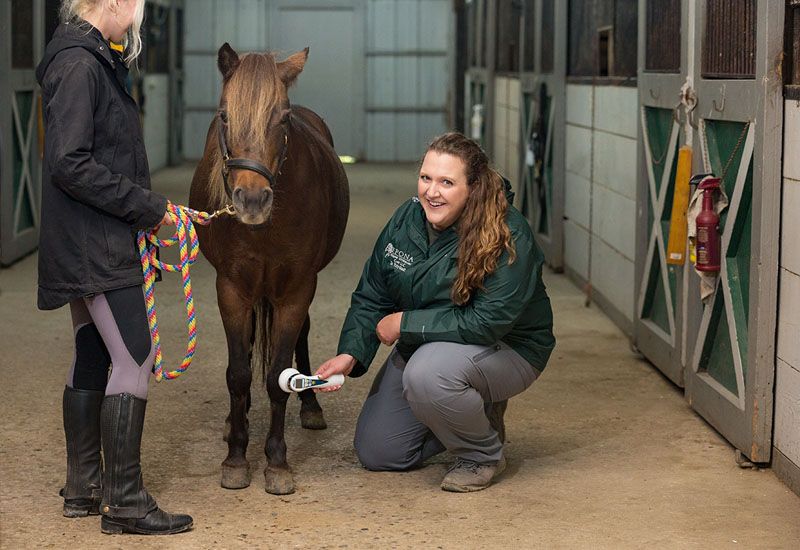Equine Therapy for Kid: Emotional and Behavioral Assistance Described
Equine Therapy for Kid: Emotional and Behavioral Assistance Described
Blog Article
Examining the Efficiency of Laser Therapy in Horse Treatment for Injury Rehab
The examination of laser therapy's performance in equine injury rehab hinges on numerous elements, including recuperation time, pain reduction, and tissue regeneration. Vets regularly observe premium outcomes with laser treatment contrasted to traditional approaches, placing it as a critical component in equine treatment. Equine Therapy.

Understanding Laser Treatment
Laser treatment has actually ended up being a crucial device in vet medicine, particularly in the therapy of equine conditions. Known for its non-invasive nature and efficacy, laser therapy entails the application of certain wavelengths of light to promote cells repair service and decrease inflammation. This healing technique is significantly preferred for its capability to increase the healing process in steeds enduring from a selection of musculoskeletal injuries and persistent problems.
The main device behind laser treatment is its capability to enhance cellular functions. Furthermore, laser therapy promotes vasodilation, improving blood circulation and oxygen delivery to damaged tissues, thus expediting recovery.
In equine medication, laser treatment is specifically valuable for conditions such as tendonitis, osteo arthritis, and wound recovery. The technique is lauded for its pain-relieving buildings, permitting equines to regain movement and feature more swiftly. Vets likewise appreciate its minimal negative effects contrasted to various other therapy methods, making it a trusted and risk-free option for equine treatment.
Exactly How Laser Therapy Works
To recognize exactly how laser therapy functions, it is essential to dive into the communication between light energy and organic cells. Laser therapy, likewise understood as Low-Level Laser Therapy (LLLT) or photobiomodulation, uses details wavelengths of light to pass through cells and stimulate mobile processes. The system pivots on the absorption of photons by cell chromophores, mainly within the mitochondria, which are critical for energy manufacturing.
Upon absorption, these photons set off a collection of biochemical changes, improving mitochondrial function and bring about enhanced adenosine triphosphate (ATP) production. This increase in ATP accelerates mobile metabolic rate, advertising cells repair work and regrowth. Additionally, laser treatment modulates inflammatory feedbacks by affecting cytokine degrees and reducing oxidative tension, therefore minimizing discomfort and swelling.
An additional considerable element of laser therapy is its duty in boosting microcirculation. The treatment advertises vasodilation, boosting blood circulation and oxygen distribution to damaged cells. This assists in the elimination of cellular particles additional hints and sustains the expansion of fibroblasts and collagen synthesis, crucial for wound recovery.
Professional Proof
The effectiveness of laser treatment in equine therapy has been confirmed through numerous medical researches, showcasing its therapeutic potential throughout a variety of conditions. A research performed by Turner et al. (2012) demonstrated that horses treated with low-level laser treatment (LLLT) for ligament injuries exhibited accelerated healing compared to those obtaining traditional treatments.
Likewise, research by Johnson and colleagues (2015) concentrated on equine muscle injuries, exposing that laser treatment significantly accelerated muscle fiber regrowth and decreased muscle mass rigidity. Scientific evaluations have shown that laser treatment can relieve persistent problems such as osteo arthritis.
Veterinarian Insights
Vet professionals have significantly acknowledged the worth of laser therapy in equine treatment, mentioning both empirical evidence and firsthand experience. Dr. Jane Smith, a leading equine veterinarian, keeps in mind that laser therapy has actually revealed amazing efficiency in reducing inflammation and increasing tissue repair. "In my technique, I've observed quicker recovery times in steeds treated with laser therapy contrasted to traditional methods," she specifies. This sentiment is resembled by Dr. John Doe, that emphasizes that laser therapy supplies a non-invasive choice with minimal negative effects, making it particularly suited for equine individuals.
Veterinarians also value the convenience of laser treatment. She aims out that laser therapy can be customized to the specific demands of each equine, making certain ideal results.

Practical Considerations
A vital element of applying laser therapy in equine treatment entails understanding the functional considerations that ensure its efficacy and security. Firstly, it is essential to pick the suitable laser device, as various types vary in wavelength, power, and penetration depth. Veterinarians must be well-versed in these criteria to customize treatment protocols successfully to each injury type
Moreover, the you could check here frequency and period of laser treatment sessions need careful planning to make the most of restorative advantages while lessening any possible negative impacts. Regular monitoring of the equine's reaction to treatment can lead required modifications in the treatment routine. Developing a risk-free and regulated atmosphere throughout therapies is additionally vital to prevent unintentional direct exposure to laser exhausts, which could hurt both the equine and the trainer.
Educating and accreditation of employees administering laser therapy are paramount to make sure proper method and to promote safety standards. In addition, preserving precise documents of each session, consisting of laser setups and observed results, is important for examining the general performance of the treatment and for making data-driven decisions.
Final Thought
Laser treatment has emerged as an efficient modality in equine injury rehab, offering substantial advantages in recuperation time, pain alleviation, and tissue recovery. For optimum outcomes, continual tracking and personalized treatment methods stay necessary in leveraging the full potential of laser therapy in equine care.
Report this page